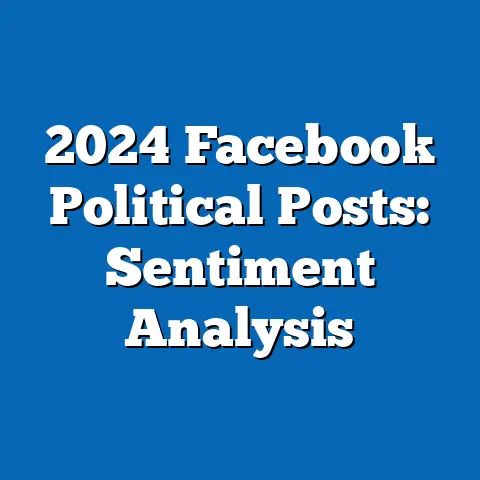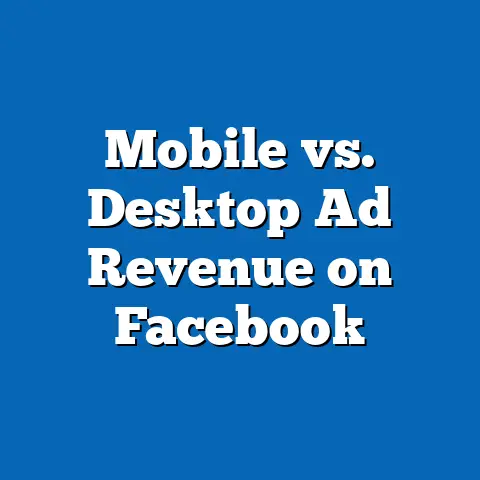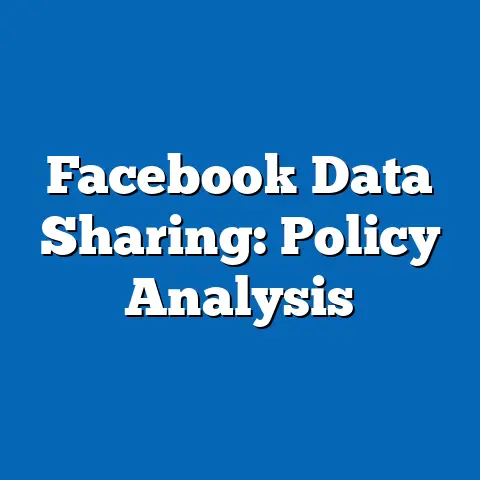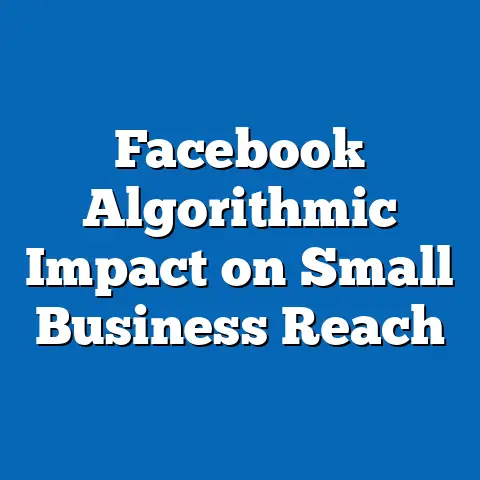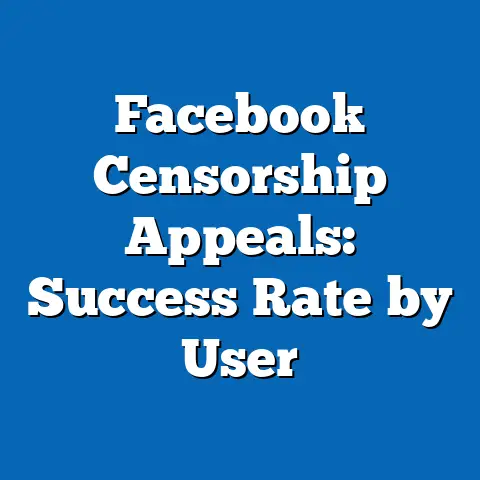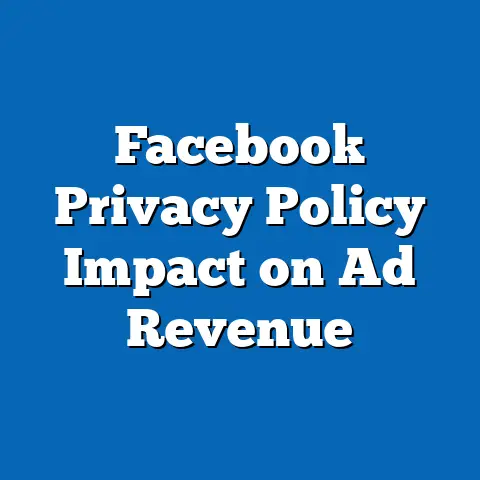Facebook News Feed: Ad Revenue vs. User Time
In the digital age, few platforms have shaped social interaction, information dissemination, and economic models as profoundly as Facebook. At the heart of its ecosystem lies the News Feed, a personalized stream of content that dictates how billions of users interact with friends, news, and brands. However, a critical challenge has emerged: the tension between maximizing ad revenue through the News Feed and maintaining user time on the platform.
This conflict is not merely a business dilemma; it encapsulates broader societal concerns about attention economics, mental health, and the role of technology in shaping generational behaviors. As Facebook (now Meta) strives to optimize its algorithms for profitability, questions arise about whether this comes at the expense of user satisfaction and long-term engagement. Historically, the News Feed, introduced in 2006, transformed social media by curating content dynamically, but its evolution into an ad-heavy interface has sparked debates about its impact on user experience and trust.
The societal implications are vast. With over 2.9 billion monthly active users as of 2023 (Statista), Facebook influences how generations consume information, form opinions, and connect with others. The platform’s decisions on News Feed content can affect political polarization, misinformation spread, and even personal well-being, particularly among younger users. This article delves into the intricate balance between ad revenue and user time, exploring generational differences in engagement, historical shifts in platform priorities, and the broader cultural and economic consequences of this dynamic.
Section 1: Historical Context of the News Feed and Its Evolution
The News Feed was a groundbreaking innovation when it launched in 2006, consolidating updates from friends, pages, and groups into a single, algorithmically curated stream. Initially, it prioritized organic content, focusing on fostering social connections—a core value for early adopters, primarily Millennials and Gen X users who joined during the platform’s infancy. This era positioned Facebook as a community-driven space, distinct from the commercialized internet of the late 2000s.
However, by 2012, with Facebook’s IPO and the need to generate sustainable revenue, the News Feed began to shift. The introduction of promoted posts and targeted ads marked a turning point, as the platform leveraged its vast user data to deliver personalized advertisements. According to a 2014 study by Pew Research Center, 30% of users already felt overwhelmed by the volume of content, including ads, signaling early tensions between user experience and monetization.
By 2018, amid growing scrutiny over data privacy (notably the Cambridge Analytica scandal) and misinformation, Facebook announced a pivot back to “meaningful interactions,” prioritizing posts from friends and family over public content and ads. Yet, ad revenue continued to climb, reaching $114.9 billion in 2021 (Meta Annual Report), highlighting the persistent prioritization of profit. This historical trajectory reflects a broader trend in tech: the inevitable commercialization of platforms initially built on user-centric ideals, a shift that has generational implications as younger users (Gen Z) demand authenticity over algorithmic manipulation.
Section 2: Defining the Core Conflict – Ad Revenue vs. User Time
At its core, the challenge lies in a fundamental trade-off: ads generate revenue but risk alienating users if they disrupt the experience too much, while user time (or “time spent on platform”) is a key metric of engagement and long-term viability. According to Meta’s 2023 Q2 earnings report, advertising accounts for over 97% of total revenue, underscoring the company’s reliance on the News Feed as a primary ad delivery mechanism. However, excessive ad frequency or poorly targeted content can drive users away, as evidenced by a 2021 survey from eMarketer showing that 27% of users felt ads on social media were “intrusive.”
User time, on the other hand, reflects the platform’s ability to retain attention in a competitive digital landscape. With rivals like TikTok and Instagram (also owned by Meta) capturing younger demographics, Facebook faces pressure to keep users scrolling. A 2022 report by Insider Intelligence noted a decline in daily active users among Gen Z, with only 32% using Facebook regularly compared to 71% on Instagram. This suggests that over-monetization through ads may be eroding the platform’s appeal for younger generations who prioritize seamless, entertaining content over commercial interruptions.
The societal stakes are high. If users spend less time on the platform due to ad fatigue, Facebook’s influence over public discourse and information sharing diminishes. Conversely, prioritizing engagement through addictive algorithms (as whistleblower Frances Haugen revealed in 2021) can exacerbate mental health issues, particularly among teens, and amplify harmful content. This tension is not just a corporate concern but a reflection of how technology shapes generational values and societal norms.
Section 3: Generational Differences in News Feed Engagement
Generational cohorts interact with the News Feed in distinct ways, influenced by their historical context, technological exposure, and cultural values. Understanding these differences is crucial to analyzing the ad revenue-user time dynamic, as each group responds uniquely to content curation and monetization strategies.
Baby Boomers (born 1946-1964): Boomers, who adopted Facebook later in life, often use the platform to stay connected with family and consume news. A 2019 Pew Research study found that 68% of Boomers use Facebook, with many citing it as a primary news source. However, they are more likely to tolerate ads, viewing them as a trade-off for free access, though they express frustration with misinformation and political content in the News Feed.
Generation X (born 1965-1980): Gen X, a bridge between analog and digital eras, values practicality and often uses Facebook for professional networking and group interactions. They are less sensitive to ads than younger generations but are wary of privacy intrusions, a concern heightened by historical events like the 2018 data scandals. Their engagement remains steady, with 66% using the platform regularly (Pew, 2021), though they spend less time than Millennials due to competing responsibilities.
Millennials (born 1981-1996): As early adopters of social media, Millennials shaped Facebook’s initial growth, using it for social connection and self-expression. However, a 2022 survey by Morning Consult found that 40% of Millennials feel overwhelmed by ads and algorithmic bias in the News Feed, leading some to reduce usage. They prioritize authentic content but are still engaged, spending an average of 30 minutes daily on the platform (Statista, 2023).
Generation Z (born 1997-2012): Gen Z represents both a challenge and an opportunity for Facebook. Raised on short-form, visually driven content (e.g., TikTok), they find the News Feed less intuitive and ad-heavy. Only 32% use Facebook daily, compared to 84% on TikTok (Insider Intelligence, 2022). Their preference for authenticity and aversion to overt commercialization means that excessive ads can drive them away, yet they are also more likely to engage with interactive or influencer-driven content if curated effectively.
These generational nuances highlight the difficulty of creating a one-size-fits-all News Feed. While Boomers and Gen X may accept ads as a necessary evil, Millennials and Gen Z demand a balance of value and entertainment, pushing Meta to rethink how monetization impacts user retention across age groups.
Section 4: Technological and Algorithmic Factors
The News Feed’s algorithm is the linchpin of both ad revenue and user time, determining what content appears and when. Initially based on simple metrics like recency, the algorithm evolved into a complex machine learning system by the 2010s, prioritizing content based on user behavior, engagement signals (likes, shares), and ad relevance. A 2020 study by the University of Southern California found that the algorithm often amplifies emotionally charged or polarizing content, as it drives higher engagement, even if it risks user dissatisfaction or societal harm.
From an ad revenue perspective, the algorithm excels at micro-targeting, using vast datasets to deliver personalized ads with high conversion rates. Meta reported a 20% increase in ad impressions in 2022, attributed to improved targeting capabilities. However, this focus can clutter the News Feed, with users reporting an average of one ad for every three organic posts (eMarketer, 2021), leading to “scroll fatigue.”
Technologically, Meta faces the challenge of balancing algorithmic precision with user autonomy. Efforts to reduce ad overload, such as the 2018 “meaningful interactions” update, temporarily boosted user time but dented ad revenue growth. Meanwhile, innovations like Reels (short-form video) aim to compete with TikTok and retain Gen Z, but integrating ads into these formats risks alienating users who seek ad-free experiences elsewhere. The algorithmic tug-of-war reflects a broader tech trend: the struggle to harness data for profit without sacrificing user trust or engagement.
Section 5: Economic and Social Implications
Economically, the News Feed’s ad-driven model has transformed digital marketing, enabling small businesses and global brands alike to reach niche audiences. In 2022, Meta’s ad revenue supported over 10 million businesses worldwide (Meta Impact Report), illustrating its role as an economic engine. However, over-reliance on ads creates vulnerabilities; a 2021 boycott by major advertisers over content moderation issues led to a temporary $60 billion market value drop, signaling the fragility of this model if user trust erodes.
Socially, the News Feed shapes how generations perceive reality. For Boomers and Gen X, it’s a news aggregator, but studies (Pew, 2020) show that 64% of users encounter misinformation weekly, contributing to polarization. For Millennials and Gen Z, the platform’s mental health impact is significant; a 2021 internal Meta study leaked by Haugen revealed that 32% of teen girls felt worse about their body image due to curated content and ads. This raises ethical questions about prioritizing revenue over well-being, particularly for vulnerable demographics.
Moreover, the News Feed’s role in cultural discourse cannot be understated. It amplifies trends, memes, and movements, but its ad-heavy structure often buries organic cultural content under commercial noise. This dynamic risks homogenizing cultural exchange, as algorithms favor paid content over diverse voices, a concern especially for younger generations seeking authentic representation.
Section 6: Workplace and Policy Implications
In the workplace, Facebook’s ad revenue model influences how businesses engage with consumers and employees. The platform’s targeted ads are a boon for recruitment and branding, with 70% of HR professionals using social media for hiring (SHRM, 2022). However, ad saturation in the News Feed can reduce organic reach for companies, forcing them to invest more in paid campaigns, which disproportionately impacts smaller firms.
From a policy perspective, the ad revenue-user time conflict has drawn regulatory scrutiny. The European Union’s Digital Services Act (2022) mandates transparency in algorithmic content curation, while U.S. lawmakers debate Section 230 reforms to hold platforms accountable for harmful content amplified by ad-driven algorithms. These policies could force Meta to deprioritize revenue in favor of user safety, a shift that might reduce engagement but improve societal outcomes. Generational attitudes toward regulation also vary; Gen Z and Millennials are more likely to support oversight (Pew, 2023), reflecting their skepticism of Big Tech compared to older cohorts.
Section 7: Comparative Analysis Across Platforms
Comparing Facebook’s News Feed to other platforms reveals distinct approaches to the ad revenue-user time balance. TikTok, for instance, integrates ads seamlessly into its “For You” page, using short, engaging formats that Gen Z finds less intrusive; its ad revenue grew 155% in 2022 (Business of Apps). Instagram, under Meta’s umbrella, balances ads with visual storytelling, retaining 71% of Gen Z users (Insider Intelligence, 2022) through features like Stories and Reels.
Twitter (now X), conversely, struggles with ad integration post-2022 acquisition, with a reported 15% drop in ad revenue due to user dissatisfaction and content moderation concerns (Reuters, 2023). These comparisons suggest that Facebook’s challenge is not unique but exacerbated by its scale and legacy structure. Unlike newer platforms, its News Feed must cater to diverse generational needs while carrying the baggage of past controversies, making the revenue-engagement balance harder to strike.
Section 8: Forward-Looking Insights and Uncertainties
Looking ahead, Meta faces a pivotal moment in redefining the News Feed. Innovations like AI-driven content moderation and personalized ad controls could mitigate user fatigue, but their effectiveness remains unproven. A 2023 pilot allowing users to customize ad frequency showed a 10% uptick in satisfaction (Meta Blog), yet scaling this without revenue loss is uncertain.
Generational shifts will also shape the future. As Gen Z and Alpha (born post-2012) dominate user bases, demand for authenticity and ad-light experiences will intensify, potentially forcing Meta to diversify revenue beyond ads—perhaps through subscriptions or metaverse investments. However, economic pressures, like inflation impacting ad budgets, and regulatory hurdles could constrain innovation.
Societally, the News Feed’s role in democracy, mental health, and cultural exchange will remain contentious. Will Meta prioritize user time to retain influence, or double down on ads to appease shareholders? The answer is unclear, but the stakes extend beyond corporate strategy to how technology mediates human connection across generations.
Conclusion
The tension between ad revenue and user time in Facebook’s News Feed encapsulates a broader struggle in the digital era: balancing profit with purpose. From its origins as a social connector to its current status as an ad-driven behemoth, the News Feed reflects evolving generational expectations, technological capabilities, and societal priorities. While Boomers may tolerate ads for connectivity, Gen Z demands value and authenticity, challenging Meta to adapt without losing its economic foundation.
The implications ripple through culture, economics, and policy, influencing how we consume information, build communities, and navigate mental health. As Meta charts its future, the News Feed will remain a battleground for innovation and ethics, with outcomes that could redefine social media’s role in society. While uncertainties abound, one truth persists: the balance between revenue and engagement is not just a business metric but a mirror of our generational and cultural values in an increasingly digital world.

